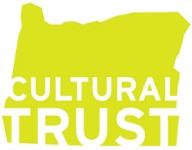The following article is from Eastman’s Online Genealogy Newsletter and is copyright by Richard W. Eastman. It is re-published here with the permission of the author. Information about the newsletter is available at blog.eogn.com.
Note that Ellis Island websites have been moved since this article was written. Links have been updated to reflect those changes — GFO webmaster.
Close to the mouth of the Hudson River in New York Harbor is a small island that is forever etched in our country’s history. Formerly known as Oyster Island, Ellis Island was the gateway to the new land for more than 10 million immigrants between its opening in 1892 and its closing in 1931. For most of these “huddled masses yearning to breathe free,” processing through Ellis Island often required several days.
As each ship entered the Lower Bay of New York Harbor, it was diverted to a quarantine area. Here medical inspectors would board the incoming ships to check for possible contagious diseases: cholera, plague, smallpox, typhoid fever, yellow fever, scarlet fever, measles, and diphtheria. The quarantine examination conducted aboard ship was reserved for first- or second-class cabin passengers. U.S. citizens were altogether exempt from the examination, so for them this was just an aggravating pause. However, passengers in steerage had to wait for their examinations later at Ellis Island. For them, quarantine was a time of heightened frustration and ever-increasing anxiety. Ships were examined from 7 a.m. to 5 p.m. daily. This meant that any vessel arriving after 5 p.m. had to anchor for the night, yet another day’s delay for the weary immigrants.
After passing medical inspection, the ships were allowed to dock in New York. Each immigrant wore a nametag with the individual’s manifest number – their identifying number from the ship’s passenger list – written in large figures. The immigrants were then assembled in groups of thirty, according to manifest numbers, and were crowded onto the top decks of barges while their baggage was piled onto the lower decks. Soon they arrived at Ellis Island’s landing slip and were led to the main building’s large reception room. Here, at last, immigrants would take the final step in their journey to freedom in America.
The sea of humanity is difficult to imagine. An ocean steamship typically carried 600 to 1,000 passengers, all of whom walked down the gangplank within an hour or so. It was not unusual for five or six steamships to arrive in a single day, flooding the Immigration Office with people speaking many languages. The baggage often was piled in mountains wherever it could fit. The sense of smell would be offensive by today’s standards: many closely-packed bodies of people who had spent weeks at sea without proper bathing facilities. With hundreds of babies crying, youngsters anxious to run after weeks at sea, and adults anxious to see the “land of gold,” the confusion must have been overwhelming to many of the new arrivals.
The huge halls at Ellis Island provided basic accommodations, dormitory-style sleeping quarters, and a large dining hall. The immigrants had to stay here for one to three days or sometimes even longer, their costs paid by the steamship company that brought them, until relatives or friends called for them. Most of the newcomers had to have a “sponsor” meet them and guarantee to pay their living expenses. Those immigrants carrying funds of at least $20 to prove they were self-sufficient could enter the country without a sponsor. Most arrivals had less than that in their pockets.
Any unfortunate travelers with neither funds nor sponsor were sent back to the old world at the expense of the steamship company. The same was true for anyone found to have a noxious disease, as well as for those identified as idiots, lunatics, and convicts.
One myth that persists today is that all immigrants passed through Ellis Island. In fact, that port of entry was open only from 1892 to 1931. From 1855 to 1892, immigrants arrived at Castle Garden. Millions of others arrived in Portland (Maine), Boston, Fall River, Philadelphia, Baltimore, Charleston, New Orleans, Galveston, Los Angeles, and Angel Island (San Francisco), plus numerous other ports, as well as overland from Canada and Mexico.
Another myth is that many immigrants had their names changed at Ellis Island because they could not converse with English-speaking immigration officials. However, a close examination of government records soon dispels this American legend. Each immigrant carried documentation written in their native language by authorities in “the old country.” These documents always listed the complete name of each immigrant, along with details of their nationality and place of origin. Here again, any immigrant arriving without proper documentation was sent back at the expense of the steamship company. Having no desire to pay such expenses, all the shipping lines would verify documentation in the old country before allowing their passengers to embark. This verification in “the old country” typically was done by local natives who were fluent in the language involved and then was examined again at Ellis Island by interpreters who spoke and read that language.
Ellis Island hired a small army of interpreters. The interpreters spoke the required languages fluently. Most were either prior immigrants themselves or the children of immigrants who learned their mother tongue as children. In retrospect, these interpreters were the unsung heroes of the entire immigration screening process. Their patience and skill often helped save an immigrant from deportation. The average number of languages spoken by an interpreter was six, but fluency in a dozen languages (including dialects) was not uncommon. The record for a single interpreter was fifteen languages.
As a result of the required documentation and the examinations held in the would-be immigrant’s native language, almost all immigrants had well-documented names and origins. The many family claims of name changes at Ellis Island, stowaways, “jumping ship,” and such are almost always fictitious.
One interpreter at Ellis Island was Fiorello La Guardia, who would later become famous as the mayor of New York City responsible for cleaning up the corruption of Tammany Hall. He worked at Ellis Island for an annual salary of $1,200 from 1907 to 1910 and helped thousands of Italians and other immigrants enter the country.
These interpreters led groups through the Ellis Island processing. A doctor would meet the immigrants first at the top of a flight of stairs. As the immigrants climbed the stairs, the doctor looked for signs of lameness, heavy breathing that might indicate a heart condition, or “bewildered gazes” that might be symptomatic of a mental condition. As each immigrant passed, the doctor would examine the immigrant's face, hair, neck, and hands. The doctor wielded a piece of chalk to mark the nametags of those who were to be detained for further medical inspection. Roughly 20 percent of the immigrants had their nametags so marked.
Sometimes whole groups would be made to bathe with disinfectant solutions before being cleared – not too surprising, considering how many were unable to bathe during the crossing. Next the immigrants encountered a group of doctors known as the dreaded “eye men.” They were looking for symptoms of trachoma, an eye disease that might cause blindness and even death. This disease was the reason for more than half of the medical detentions, and its discovery meant certain deportation. This inspection was over in a few seconds, as the doctor tilted the immigrant's head back and swiftly snapped back the upper eyelids over a small instrument that was actually a hook for buttoning shoes. If immigrants had any of the diseases proscribed by the immigration laws, or were too ill or feeble-minded to earn a living, they would be deported.
Roughly two percent of the immigrants seeking refuge in America who made it as far as Ellis Island failed to be admitted. Disability or disease, particularly trachoma, were the main reasons for not allowing entry. Sick children aged 12 and over were sent back to Europe alone and released in the port they had originally departed from. Younger children had to be accompanied by a parent. We can only imagine the tearful scenes as the mother and father decided who was to accompany the sick child back to the embarkation port, perhaps never to see the rest of the family again. Even worse, sending sick teenagers alone back across the ocean often meant certain death for the youngsters from disease, starvation or neglect.
Immigrants who passed their medical exams were now ready to take the final test from the “primary line” inspector, seated on a high stool with the ship’s manifest on a desk in front of him and an interpreter at his side. This questioning process was designed to verify the 29 items of information contained in the manifest for each passenger. Since each inspector had only about two minutes in which to decide whether each immigrant was “clearly and beyond a doubt entitled to land,” nearly all of the immigrants received curt nods of approval and were handed landing cards. They were then free to leave, settle in this strange new land, and raise families. Many of us are thankful that our ancestors “passed the test.”
If you want to research your ancestors’ passage through Ellis Island, you will be glad to know that all the records were preserved and are available for inspection today. Even better, you do not need to visit Ellis Island to view them. Space on the island has always been limited; the records were removed within days of the immigrants’ entry and then stored in government filing cabinets on the mainland. In later years all the records were microfilmed, and thousands of copies are available. You can probably find microfilm copies near you. If not, you can rent the reels of microfilm at very modest costs.
Many of the Ellis Island records have also been transcribed into computer databases and are available on the Internet at www.LibertyEllisFoundation.org/passenger. Images of the original records are also available online. With a bit of patience, you may find your ancestor in those records.
For more information about Ellis Island, go to www.libertyellisfoundation.org and www.nps.gov/elis/index.htm.




